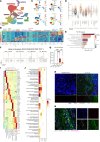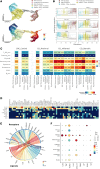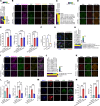Intercellular interaction between FAP+ fibroblasts and CD150+ inflammatory monocytes mediates fibrostenosis in Crohn's disease
- PMID: 39042469
- PMCID: PMC11324301
- DOI: 10.1172/JCI173835
Intercellular interaction between FAP+ fibroblasts and CD150+ inflammatory monocytes mediates fibrostenosis in Crohn's disease
Abstract
Crohn's disease (CD) is marked by recurring intestinal inflammation and tissue injury, often resulting in fibrostenosis and bowel obstruction, necessitating surgical intervention with high recurrence rates. To elucidate the mechanisms underlying fibrostenosis in CD, we analyzed the transcriptome of cells isolated from the transmural ileum of patients with CD, including a trio of lesions from each patient: non-affected, inflamed, and stenotic ileum samples, and compared them with samples from patients without CD. Our computational analysis revealed that profibrotic signals from a subset of monocyte-derived cells expressing CD150 induced a disease-specific fibroblast population, resulting in chronic inflammation and tissue fibrosis. The transcription factor TWIST1 was identified as a key modulator of fibroblast activation and extracellular matrix (ECM) deposition. Genetic and pharmacological inhibition of TWIST1 prevents fibroblast activation, reducing ECM production and collagen deposition. Our findings suggest that the myeloid-stromal axis may offer a promising therapeutic target to prevent fibrostenosis in CD.
Keywords: Fibrosis; Gastroenterology; Inflammation; Inflammatory bowel disease; Monocytes.
Figures






References
MeSH terms
Substances
LinkOut - more resources
Full Text Sources
Medical
Miscellaneous

